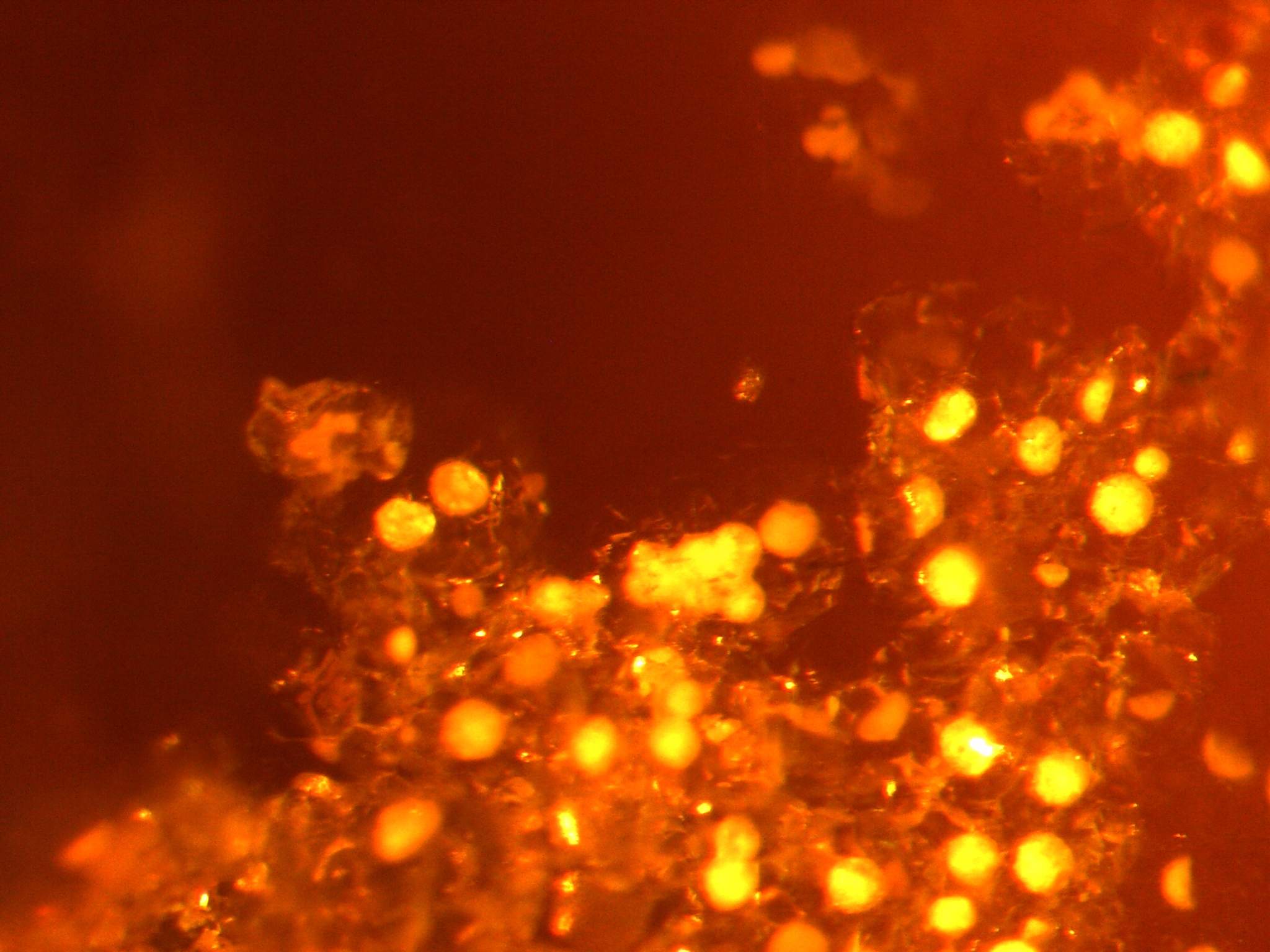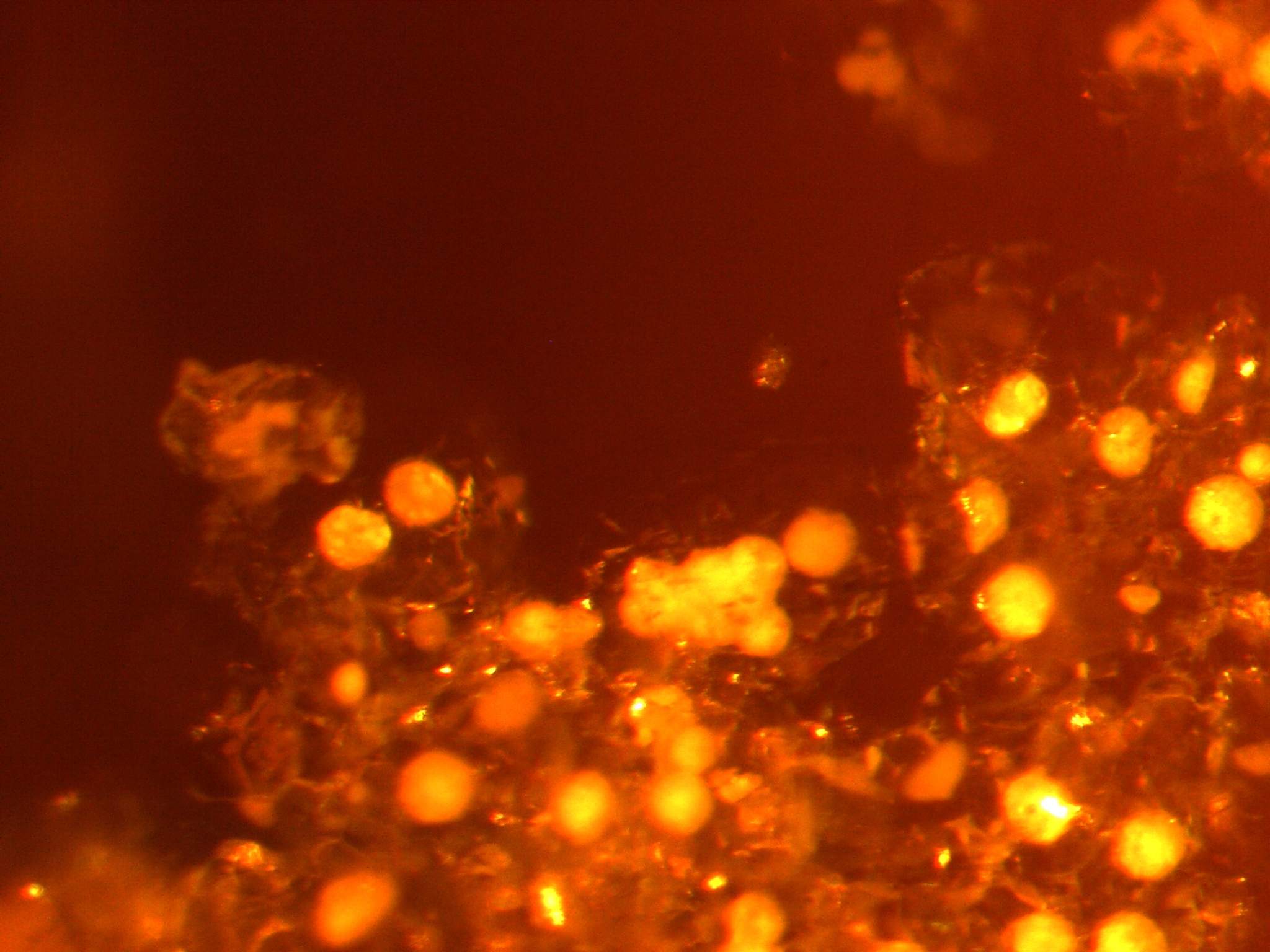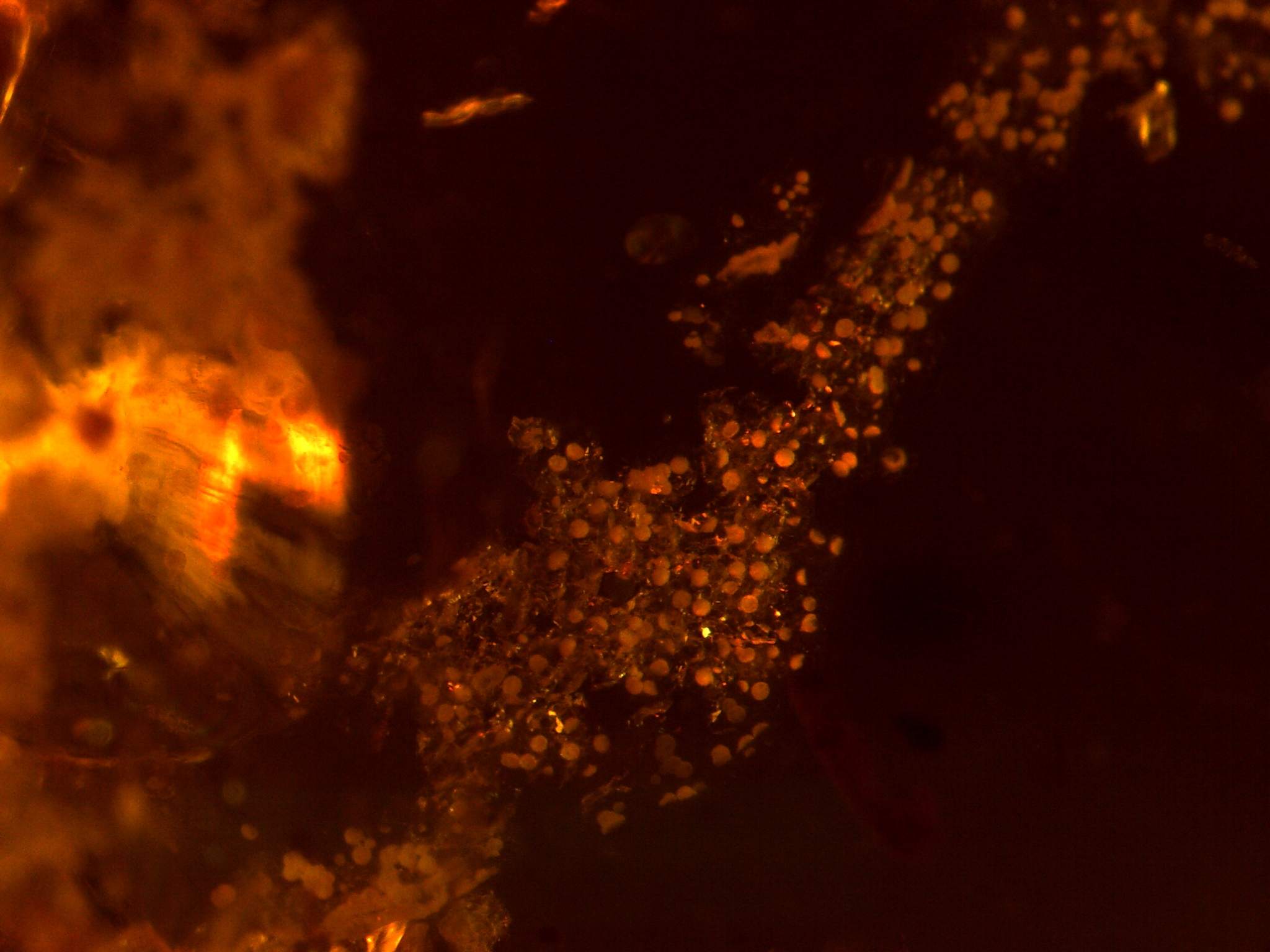The nematodes (/ˈnɛmətoʊdz/) or roundworms constitute the phylum Nematoda. They are a diverse animal phylum inhabiting a broad range of environments. Nematode species can be difficult to distinguish, and although over 25,000 have been described, of which more than half are parasitic, the total number of nematode species has been estimated to be about 1 million. Nematodes are classified along with insects and other moulting animals in the clade Ecdysozoa, and, unlike flatworms, have tubular digestive systems with openings at both ends.
Nematodes have successfully adapted to nearly every ecosystem from marine (salt water) to fresh water, to soils, and from the polar regions to the tropics, as well as the highest to the lowest of elevations. They are ubiquitous in freshwater, marine, and terrestrial environments, where they often outnumber other animals in both individual and species counts, and are found in locations as diverse as mountains, deserts and oceanic trenches. They are found in every part of the earth's lithosphere, even at great depths (0.9–3.6 km) below the surface of the Earth in gold mines in South Africa. They represent 90% of all animals on the ocean floor.[13] Their numerical dominance, often exceeding a million individuals per square meter and accounting for about 80% of all individual animals on earth, their diversity of life cycles, and their presence at various trophic levels point at an important role in many ecosystems. The many parasitic forms include pathogens in most plants and animals (including humans). Some nematodes can undergo cryptobiosis.
Nathan Cobb, a nematologist, described the ubiquity of nematodes on Earth thus:
In short, if all the matter in the universe except the nematodes were swept away, our world would still be dimly recognizable, and if, as disembodied spirits, we could then investigate it, we should find its mountains, hills, vales, rivers, lakes, and oceans represented by a film of nematodes. The location of towns would be decipherable, since for every massing of human beings there would be a corresponding massing of certain nematodes. Trees would still stand in ghostly rows representing our streets and highways. The location of the various plants and animals would still be decipherable, and, had we sufficient knowledge, in many cases even their species could be determined by an examination of their erstwhile nematode parasites
NEMATODA (2c., 2o., 1f., 2g., 2sp.)
Enoplea (1o., 1f., 2g., 2sp.)
Rhabditida - AphelenchoididaeCretaciaphelenchoides burmensis n. gen. n. sp.13
Rhabditida - Heterorhabditidae
Proheterorhabditis burmanicus n. gen. n. sp.13
Rhabditida -
Cretodiplogaster termitophilus n. gen. n. sp.13
Rhabditida - Cosmocercidae
Palaeocosmocerca burmanica n. gen. n. sp.13
Rhabditida - Thelastomatidae
Paleothelastoma tipulae n. gen. n. sp.13
Mermithida - Mermithidae
Cretacimermis protus13
Mermithida (1f., 2g., 2sp.)
Mermithidae
Cretacimermis protus Poinar & Buckley, 2006
Heleidomermis cataloniensis Poinar & Monteys, 2008
Heleidomermis cataloniensis n. sp. (Nematoda: Mermithidae) is described from Culicoides circumscriptus Kieffer (Diptera: Ceratopogonidae) in Spain. Diagnostic characters include prominant elevations with multiple genital papillae on either side of the cloacal opening, only one row of genital papillae on the lateral surface of the tail, the tapering tip of the spicule and a reduced vagina. A male intersex of C. circumscriptus parasitised by H. cataloniensis n. sp. has mouthparts resembling those of the female. Two 100 million year-old fossil specimens of an un-named species of Cretacimermis Poinar, 2001, from an Early Cretaceous Burmese amber biting midge of the genus Leptoconops Skuse, show the antiquity of ceratopogonid-mermithid associations.
Chromadorea (1o.)
Rhabditida
NEMATOMORPHA (1c., 1f., 1g., 1sp.)
Gordioidea (1f., 1g., 1sp.)
Chordodidae
Cretachordodes burmitis Poinar & Buckley, 2006
Poinar, G.O.Jr. & Buckley, R. 2006. Nematode (Nematoda: Mermithidae) and hairworm (Nematomorpha: Chordodidae) parasites in Early Cretaceous amber. Journal of Invertebrate Pathology, 93(1), 36-41.
Abstract The present report describes a mermithid nematode (Nematoda: Mermithidae) and a gordiid hairworm (Nematomorpha: Chordodi- dae) from Early Cretaceous Burmese amber dated at 100–110 million years. The mermithid, Cretacimermis protus sp. n., is emerging from a biting midge (Diptera: Ceratopogonidae) while the hairworm, Cretachordodes burmitis , gen. n., sp. n. had already emerged from its host. These rare specimens represent the W rst fossil mermithid parasite of a ceratopogonid midge and second oldest described nematode and the earliest known and only Mesozoic fossil of the phylum Nematomorpha. A list of previously described fossil mermithids is inc luded. © 2006 Elsevier Inc. All rights reserved. Keywords: Cretacimermis protus sp. n.; Nematoda; Mermithidae; Ceratopogonidae; Cretachordodes burmitis ; gen. n., sp. n.; Chordodidae; Nematomor- pha; Burmese amberPoinar, G.O.Jr. 2011c. The Evolutionary History of Nematodes. Brill.






